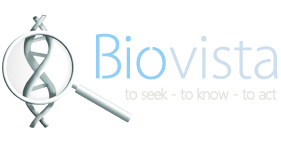
Andreas Persidis, CEO
In a recent post at the Drug Repositioning discussion group of LinkedIn, John Waslif alerted the community to an interesting article by Michael Kinch titled “The Process by which Drugs are Discovered and Developed will be Fundamentally Different in the Future”.
I guess no one will argue with such a statement. What I also think we all agree on is that a major challenge in shaping the future of healthcare is to actually imagine, design and agree on this new model for discovering and developing drugs and therapies.
For the systematic drug repositioning (SDR) community one question we should be asking ourselves is “can SDR have a role in this new model, and if so, what might this role be?”
The answer is not obvious but I think we can begin to paint a picture if we consider the various challenges facing us all on the way to this future healthcare model. Here are a few of these challenges, in no particular order:
- How do we reshape the risk/benefit function using all the new tools we now have available, in a way that better captures, quantifies and reduces the risk while at the same time bringing down the cost of drug development?
- Can we come up with new business and financing models that reflect the landscape that is created by the “reshaped” risk/benefit function?
- Both in the case of the risk and of the potential benefit of drugs we are interested in our ability to predict these. So how do we increase the accuracy of our predictive “tools”? To date we have been relying on in-vitro testing, followed by animal model testing and finally clinical trials; is there a better way? Can we combine data produced by these in new ways or can we seek to generate new kinds of data to enhance or replace some of these tests?
- Speaking of data, how do we encourage data sharing? Everybody agrees on the principle but in practice it is not happening to the degree needed. Challenges include the fear of someone else finding incriminating evidence in the data you have shared, someone else exploiting your data better than you ad so on. So can we come up with a legal and financial model that addresses these concerns?
- Drug development has been depending on our understanding of pathways to identify targets and on mechanisms of action to create new therapies. But there are other “frameworks” that could help us identify therapeutic strategies. For example, how do we exploit “biology fundamentals” such as pathway interconnectivity, feedback loops and redundancy to come up with such new strategies?
- How do we create processes that exploit incomplete and conflicting data with maximum efficiency and how do we efficiently (re)use our existing knowledge ?
- There is increasing pressure on pharma companies to offer truly differentiated products. Personalized medicine is a solid basis for “product differentiation” in the healthcare sector and so how do we accelerate R&D here?
- Maybe we need to revisit the way we do basic research: traditionally it has been something like observe/read, hypothesize, test and then repeat. But with the computer becoming “the new microscope” and opening up new possibilities we need to consider questions such as “where within biology and its processes do we look for ideas that can lead us to therapeutic strategies?” and “What kinds of questions do we ask?”
- To date there has been a lot of discussion around company silos and their detrimental effect on innovation. More recently people are beginning to talk about “tribes” as a more apt and constructive analogy for how people truly behave when it comes to collaborating and pursuing their true interests. How then can we use information technology and tools to promote “tribe interaction”?
It’s obvious that many of these challenges have a strong information and knowledge management aspect to them. What I think is important for the drug repositioning community, is that the discovery tools, the analytic techniques and the search approaches we develop for SDR can be usefully applied in many of the above challenges. The task then is to ensure we identify these tools, show how their potential role in the above challenges and thus contribute to this global effort.

